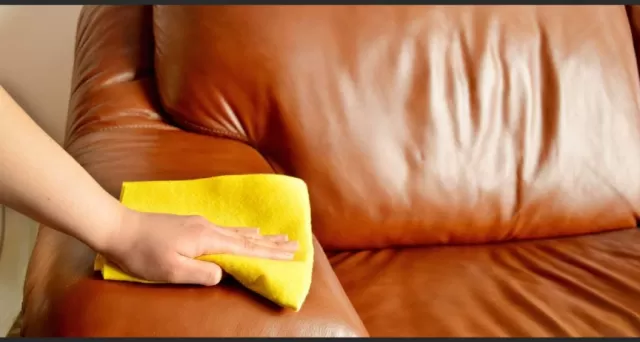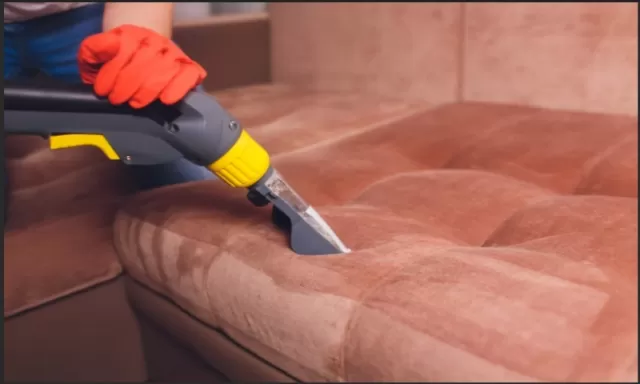Proper Techniques for Cleaning Your Leather Couch. Investing in genuine leather furniture demands proper care to maintain its longevity and lustrous appearance. Regular cleaning and conditioning treatments are integral to safeguarding the material from potential damage. Beyond the frequency of cleaning, the key lies in understanding the correct techniques and using suitable products.
Cleaning a leather couch necessitates precision to prevent any harm to the material. Employing the right cleaning products and methods is crucial for effective cleaning and conditioning. This ensures that the leather not only stays clean but also retains its natural sheen over time.
By treating your leather sofa as an investment and adopting a meticulous approach to cleaning and conditioning, you contribute to its resilience and aesthetic appeal. Choosing appropriate products and techniques safeguards the material, allowing you to enjoy the timeless elegance of genuine leather furniture for years to come.
Determining the Frequency of Leather Couch Cleaning

The regularity of cleaning your leather couch is influenced by several factors, such as how often it’s used, environmental conditions, and the manufacturer’s care guidelines.
As a general recommendation, consider using a soft, dry microfiber cloth or a vacuum attachment approximately once a week to gently remove dust, taking into account the specifics of your usage and living conditions.
Alicia Sokolowski, President and co-CEO of AspenClean, advises promptly addressing spills and stains to prevent lasting damage.
For a more thorough cleaning and conditioning, it is suggested to engage in a deep cleaning routine every six to twelve months. This timeframe ensures that your leather couch remains in good condition, preserving its appearance and Durability over time.
Ultimately, tailoring your cleaning schedule to the unique circumstances surrounding your leather couch will contribute to maintaining its aesthetic appeal and longevity.
Regular care and prompt attention to spills can go a long way in preserving the beauty of your leather furniture.
Avoiding Damage: Materials Not Suitable for Cleaning Leather
Harsh Chemicals: Products containing bleach, ammonia, or abrasive cleaners should be avoided at all costs.
According to Alicia Sokolowski, these harsh chemicals can strip away the natural oils in leather, resulting in dryness and potential cracking.
Two-in-One Products: While the convenience of two-in-one cleaner and protector products may seem tempting, Jesse Johnstone, President of Fibrenew, warns against them.
Such products may not deliver the same quality of results as dedicated two-part solutions.
Excessive Water: While it’s acceptable to use some water during leather cleaning, excessive water should be steered clear of.
Leather’s porous nature makes it susceptible to soaking, potentially leading to swelling, discoloration, and overall damage, as mentioned by Sokolowski.
Cleaners Not Intended for Leather: Sokolowski advises against using cleaners designed for other surfaces, such as wood cleaner, glass cleaner, all-purpose cleaners, or wet wipes.
These products may not be formulated to suit the specific needs of leather.
Steamer: Avoid using a steamer on leather furniture.
Jesse Johnstone explains that the heat from steam can flash out the natural fats and oils present in leather, contributing to premature aging of the material.
By steering clear of these materials and adhering to proper leather cleaning practices, you can ensure the longevity and aesthetic appeal of your leather furniture.
Essential Materials for Cleaning a Leather Couch

Microfiber Cloths: These soft and lint-free cloths are ideal for gently wiping away dust and dirt from the leather surface without causing scratches.
Distilled Water: Using distilled water helps prevent impurities and minerals found in tap water, reducing the risk of potential damage to the leather.
White Vinegar: White vinegar serves as a natural and effective cleaner.
It can be diluted with water to create a mild cleaning solution that is safe for leather.
Natural Liquid Soap: Opt for a natural liquid soap that is specifically designed for cleaning leather.
Ensure it is free from harsh chemicals that could potentially damage the material.
Olive Oil or Coconut Oil: These oils can be used to condition and moisturize the leather, preventing it from drying out and developing cracks.
Use them sparingly to avoid an oily residue.
By having these materials readily available, you can engage in a safe and effective cleaning routine for your leather couch, ensuring its longevity and maintaining its aesthetic appeal.
Always follow the manufacturer’s care guidelines and test any cleaning solution on a small, inconspicuous area before applying it to the entire surface.
How to Clean a Leather Couch
.
Dusting:.
Use a dry microfiber cloth or a vacuum with a soft brush attachment to remove loose dust and debris from the leather surface.
Preparation of Cleaning Solution:.
Mix a few drops of mild, natural dish soap with distilled water in a bowl.
Application of Cleaning Solution:.
Dip a microfiber cloth into the soapy water, ensuring it’s damp but not soaked.
Wipe the entire surface of the leather couch with the damp cloth.
Removal of Soap Residue:.
Dampen a clean cloth with distilled water.
Wipe the leather to remove any soap residue.
Drying:.
After cleaning, wipe the leather dry with a microfiber cloth.
.
How to Remove Stains From a Leather Couch.
Immediate Action:.
Blot the stain immediately with a clean, dry cloth to absorb as much liquid as possible.
Avoid rubbing to prevent spreading the stain.
Preparation of Stain Removal Solution:.
Mix a solution of equal parts distilled water and white vinegar in a bowl.
Application of Stain Removal Solution:.
Dampen a microfiber cloth with the solution.
Gently blot the stained area.
Drying:.
Pat dry with a microfiber cloth.
By following these steps, you can maintain the cleanliness and appearance of your leather couch, addressing routine cleaning and handling stains effectively.
Always perform a spot test in an inconspicuous area before applying any cleaning solution to the entire surface.
How to Condition a Leather Couch:

Selecting a Leather Conditioner:.
Choose a suitable leather conditioner to create a protective seal on the surface, guarding against oil, water, dirt, and spills.
Perform a Spot Test:.
Test the leather conditioner on an inconspicuous spot to ensure compatibility with your couch.
Preparing the Conditioning Mixture:.
Mix a small amount of olive or coconut oil with a few drops of natural liquid soap.
Application of the Conditioning Mixture:.
Using a microfiber cloth, apply the mixture to the leather in circular motions.
Ensure an even application, covering the entire surface.
Allow the conditioner to sit for a few minutes.
Removing Excess Conditioner:.
Wipe off any excess conditioner with a dry microfiber cloth.
This step helps prevent an oily residue on the leather.
By following these steps, you can effectively condition your leather couch, maintaining its suppleness and protecting it from potential damage.
Regular conditioning helps preserve the natural oils in the leather, preventing it from drying out and developing cracks. Always test any conditioning mixture on a small, inconspicuous area before applying it to the entire surface.
*The information is for reference only.